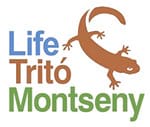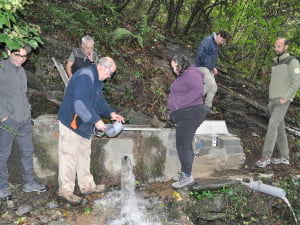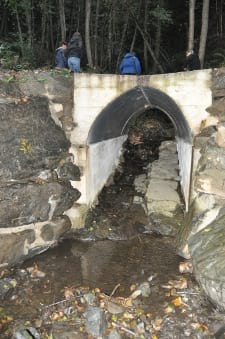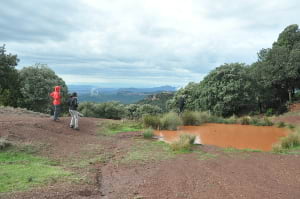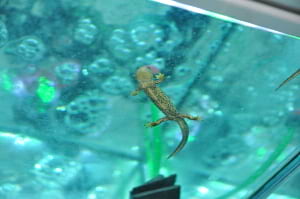Slider 3
Life Tritó Montseny
Un símbol de la natura del Montseny
Subbanner
LIFE15 NAT/ES/000757
Project of conservation of an only species to the world
Breadcrumb
Evolution
Evolution of the project Life Tritó Montseny
Asset Publisher

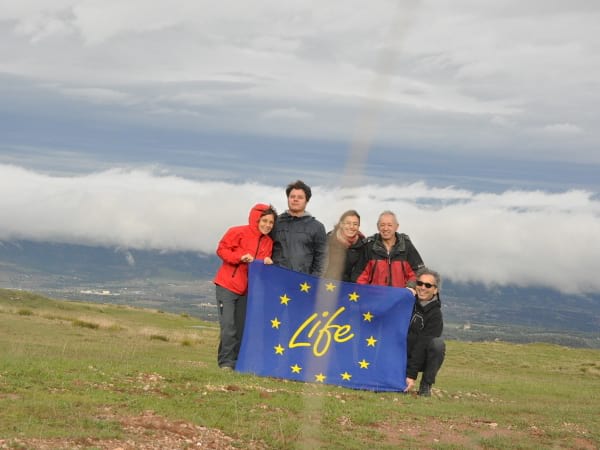
More Networking!
23/10/2019 12:50 h.
We welcome the coordinators of Life Wet Fly Amphibia and Life GoProFor
August 2019 saw the first trip to Italy to share experiences with the Life Wet Fly Amphibia and Life GoProFor projects.
The second contact with the people who coordinate these projects was in October 2019, when they came to visit the Montseny Natural Park and Biosphere Reserve (included in the Natura 2000 Network) and the actions carried out within the framework of the Life Tritó Montseny project.
Monday 21 October
During the morning, Masía Mariona (office of the Natural Park and Biosphere Reserve of Montseny) held the presentation meeting of the projects Life Wet Fly Amphibia and Life GoProFor.
It was attended by 14 people, including those responsible for the Life Wet Fly Amphibia, Life GoProFor and Life Tritó Montseny projects and Park staff (maintenance gang workers, forest rangers and technicians). The majority of participants are involved in tasks such as the management of open pasture areas, the recovery of watering holes by the herd, the creation of water ponds by wild fauna, good management practices in forest environments and the management of conflicts between fauna and livestock.
The coordinators of the Life Wet Fly Amphibia and Life GoProFor projects shared their experiences and the problems arising from the projects they are leading. They discussed similarities with the Life Tritó Montseny project and possible lines of joint work with the aim of sharing knowledge and experiences.
Once the Masía Mariona meeting was over, a field visit was made to show visitors the different actions carried out in the Montseny Natural Park and Biosphere Reserve within the framework of the Life Tritó Montseny project.
Firstly, a visit was made to an estate in the Park where there is a catchment of water from the torrent. Within the framework of the Life project, it has been possible to install a new pit that ensures the ecological flow of the torrent and increases the quality of the aquatic environment, especially in the driest months. This guarantees, throughout the year, the ecological flow established by the Catalan Water Agency (ACA).
New water collection. File: XPN
Afterwards, the eastern torrents of the Tordera were visited, places where the current vehicle crossings will be replaced by tubes and also other places where vaulted bridges have been built to increase the natural continuity of the torrent. This action contributes to eliminating or minimizing the threats to the riverside habitat currently occupied by the Montseny newt.
The interventions to improve connectivity consist of replacing the old drainage tubes with a bridge that allows a natural continuity to the torrent. During the construction of these structures, the earthworks and dismantling of the old road infrastructure are used to restore the bed of the torrents on both sides of the tracks, since in many cases it is completely collapsed by waste material from the old construction, which increases the barrier effect for the aquatic fauna of the torrents.
New vaulted bridge. Photo: XPN file
In the afternoon, we visited the restoration of the torrent bed, where the first excavation work was carried out on the material that made up the platform of the path until we found the natural rock. The material was arranged in earth mounds that contain the spillage of the road itself and the margins were protected with breakwaters. In a later phase, the margins were consolidated by means of bioengineering structures with the purpose of holding and retaining the soil during the first years. Finally, the recovery of riverbank forest has been favoured with the planting of riverbank species in the area devoid of vegetation, with the pertinent monitoring and maintenance.
At dusk a nocturnal visit was carried out but due to the drought of the last months and that the time of the year is not the ideal one to make the pursuit of newt of Montseny, only some specimens of salamander were found.
Tuesday, October 22nd
A field visit was made to the Pla de la Calma to observe the current state of vegetation in this area where pastures have been recovered. The managers of the Montseny Natural Park and Biosphere Reserve together with the landowners have tried to recover open spaces with controlled and selective burning of scrub and with the recovery of traditional extensive livestock. Two ponds were visited, one natural and the other in which an intervention has been made by the Diputació de Barcelona.
Raft in Pla de la Calma. Photo: XPN file
Breeding centre of Torreferrussa
Afterwards, the visit continued at the Torreferrussa breeding centre. The technician explained how captive breeding works. The extension of the breeding center has allowed the increase of stock of individuals bred in captivity. Chester Zoo (UK) has been incorporated into the breeding programme, genetic evaluation, bone tissue and sperm quality.
Newt in an aquarium in Torreferrussa. Photo: XPN file
At 17:00 in the afternoon ended the day of Networking.
This networking has allowed us to exchange best practices, experiences and create mutual learning spaces, which in turn serve to raise awareness and facilitate the participation of as many stakeholders as possible. They are a very efficient tool to reinforce or widen contacts and collaborations to promote trust and the sum of synergies between the administration and local collectives, whether residents or associations or institutions linked in the territory.
